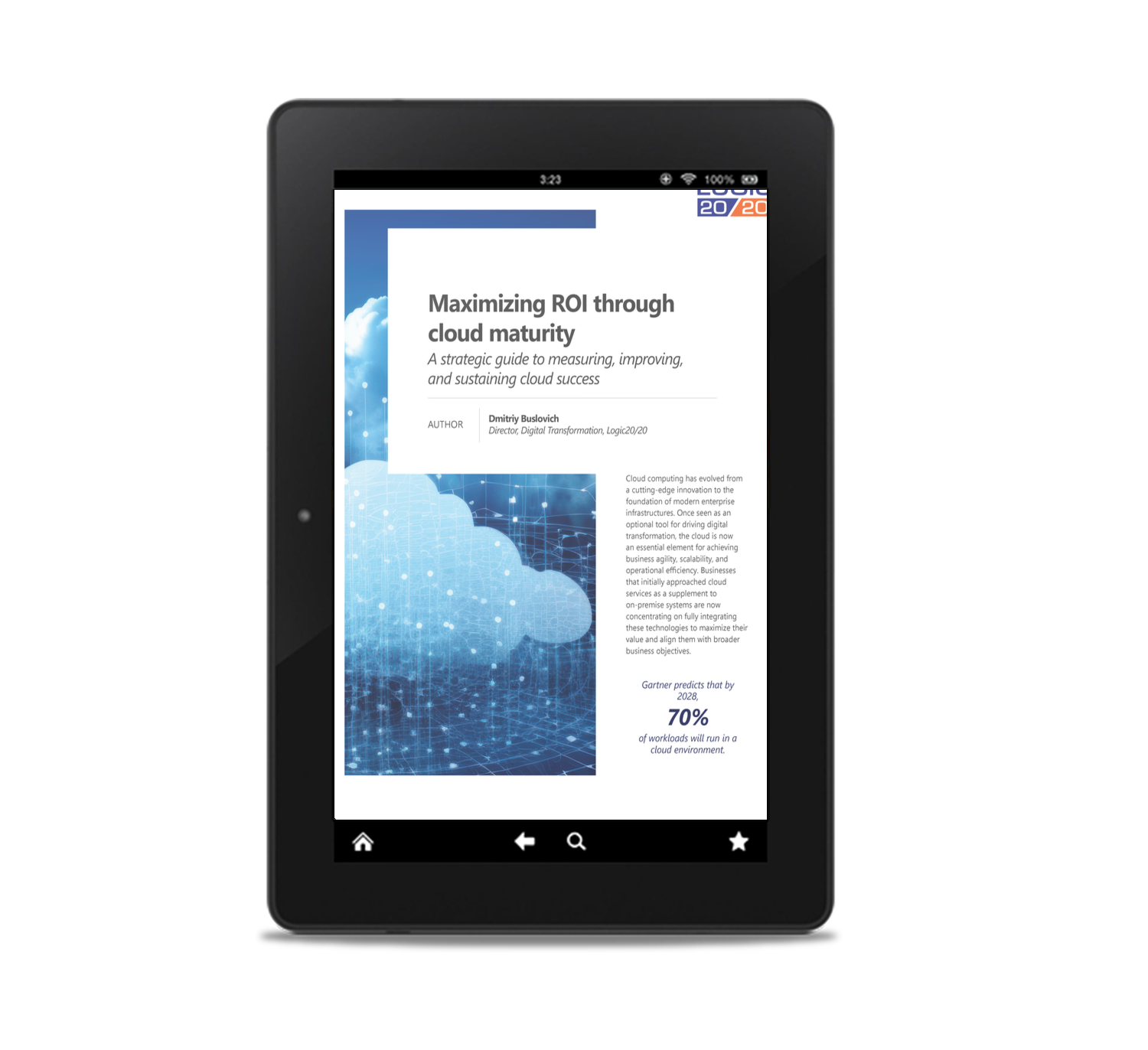Gartner predicts that by 2028, 70 percent of workloads will run in a cloud environment, reflecting the business world’s growing dependence on cloud infrastructure. But adopting cloud technology is just the first step. Only by advancing cloud maturity through continuous evaluation and improvement can organizations fully realize the cloud’s potential.
Download our white paper Maximizing ROI through cloud maturity: A strategic guide to measuring, improving, and sustaining cloud success to learn:
The five stages of cloud maturity, each representing deeper integration
KPIs that provide a clear picture of how effectively the cloud is being utilized
Common barriers to advancing cloud maturity and how to overcome them
Proven strategies for achieving and maintaining true cloud maturity
Grab your copy of Transforming utility operations with asset image analytics: Strategies and impacts

Why cloud maturity is important
Achieving cloud maturity is essential for organizations aiming to fully leverage cloud technologies to drive business success. It involves the seamless integration of cloud services into operations, aligning them with business objectives, and optimizing for efficiency, security, and scalability. This progression enables organizations to respond swiftly to market changes, foster innovation, and maintain a competitive edge.
A mature cloud strategy enhances operational agility by enabling rapid deployment and scaling of resources, which accelerates time-to-market for new products and services. It also strengthens security postures through standardized processes and advanced threat detection, reducing the risk of data breaches. Moreover, cloud maturity facilitates cost optimization by eliminating redundancies and improving resource utilization.
Organizations with high cloud maturity are better positioned to achieve their business goals. According to a study by HashiCorp, 89 percent of highly mature organizations reported that their cloud strategy has helped them meet their objectives, compared to only 55 percent of low-maturity organizations.
Ready to learn more? Download the white paper today.
Excerpt from Maximizing ROI through cloud maturity: A strategic guide to measuring, improving, and sustaining cloud success
Understanding cloud maturity: A roadmap to cloud excellence
Cloud maturity refers to how effectively an organization has integrated cloud technologies into its operations, aligned these technologies with business goals, and optimized its cloud environment for efficiency, security, and scalability. It’s a measure of how well an organization leverages the cloud to drive business outcomes.
Cloud maturity typically progresses through five stages, each representing a deeper integration and more strategic use of cloud resources:
- Basic: The organization has limited awareness of cloud technologies and their potential benefits. Cloud adoption is ad hoc, with no strategy, no dedicated cloud team, and no standardized processes.
- Beginner: Awareness of cloud technologies is growing, but expertise is limited. An initial cloud strategy and roadmap may be in development, with some experimentation in cloud services and applications.
- Intermediate: A cloud team with specific roles and responsibilities is in place. Cloud strategy is well defined and aligned with business objectives. Pilots and proofs of concept are conducted to evaluate cloud suitability for specific applications and workloads.
- Advanced: The business has skilled cloud professionals with experience in managing and optimizing cloud environments. Cloud knowledge is integrated into various departments. The organization has a systematic approach to migrating applications to the cloud, and optimization strategies are in place to ensure cost efficiency and performance.
- Expert: Cloud expertise is a core competency, with continuous learning and improvement ingrained in the company culture. Cloud-native applications are being developed as I.T. embraces microservices and DevOps practices. Continuous integration and delivery pipelines are standard.
Ready for more? Download your copy of Maximizing ROI through cloud maturity: A strategic guide to measuring, improving, and sustaining cloud success today.

